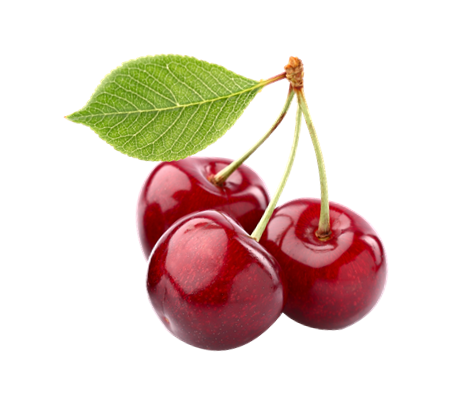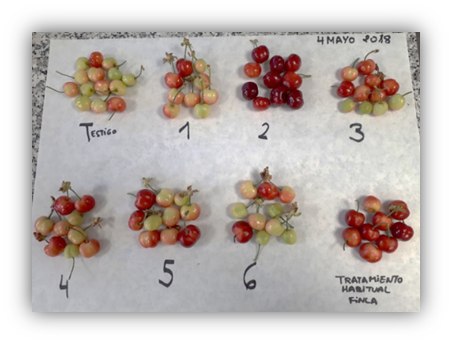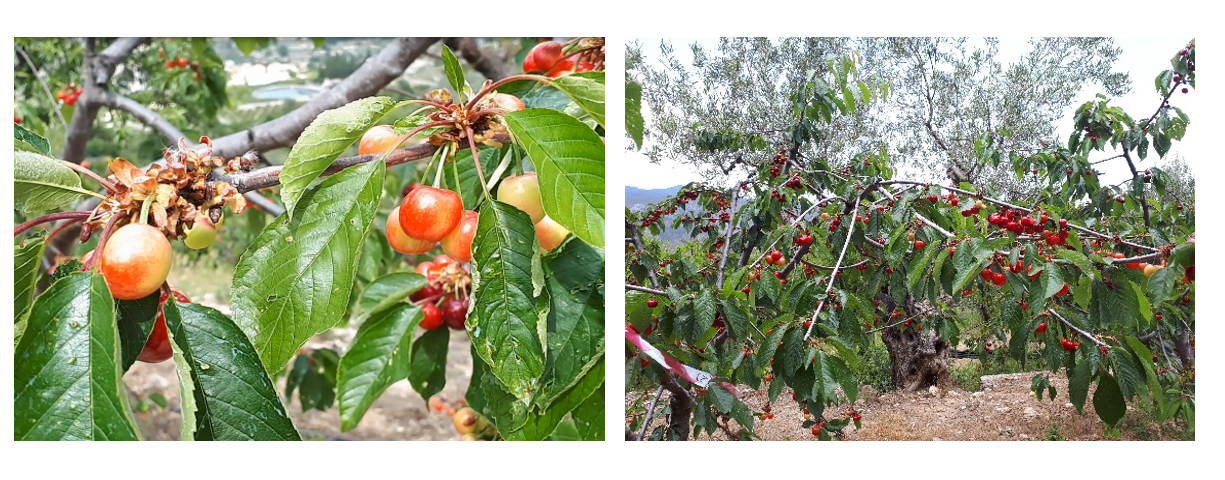The cherry is a fruit that, although it usually does not present problems to reach the commercial maturity, advances of few days in the maturation can unchain important differences of sale prices. In this sense, during the spring of 2018 we conducted an essay with FASKOLOR. The results showed that with FASKOLOR it is achieved, in addition to an advance of the ripening, it also uniforms, in a generalized way, the coloring of all the fruits.
Between April and May of 2018 we carried out an essay with the objective of evaluating the advancement in ripening and coloring of the cherry with FASKOLOR, either alone or in combination with other products, as shown in the table. The trial, which took place in a plot located in the municipality of Benitaia within the Vall de Gallinera (Alicante), counted with the collaboration of the Cooperativa Agrícola de Planes.

To counteract the effect of FASKOLOR, trees were left as control (Tto.0) and we also wanted to compare the Cultifort treatments with those that are usually applied on the farm based on a combination of amino acids, algae extracts and a phospho-potassium fertilizer. (Tto.7).
In all treatments Tto.1, Tto.2, Tto.3, Tto.4, Tto.5 and Tto.6, BVC 2021 (Dosage: 200 cc / hl) was applied to the fall of flowers in order to promote the fruit set
At 20 days of harvest, FASKOLOR was applied in treatment 2 at the maximum dose. In treatment 3 and 4, an inducer of the natural defenses of the plant (Table 3) and a product rich in calcium (Table 4) were used; both in combination with a reduced dose of FASKOLOR. Treatment 5 consisted in the application of a phospho-potassium fertilizer, and in 6 the same defensive inducer was applied as in treatment 3, but this time only. All the treatments were repeated one week later.
To make the sprays a 10 l backpack was used. To the broths NEUTROpHORT Plus was added at a dose of 150 cc / hl, to regulate the pH and facilitate assimilation by the tree.

RESULTS:
In the first evaluation visit, it was possible to see how the trees treated with FASKOLOR (Tto.2) presented about 75% of the fruits with a commercially suitable coloration and size. While the maturation of the fruits of the trees belonging to the other treatments was still quite late.
The quality parameters (ºBrix, color, caliber and firmness) were analyzed in samples of the different treatments, obtaining the following results:


These analyzes corroborated what was observed visually in the field. The fruits treated with FASKOLOR (Tto.2) presented the highest values in all the analyzed parameters, already presenting commercial values on May 4.
In a second visit, on May 9, an advance of the generalized maturation was observed in all the treatments. Although there were differences in the percentage of mature fruits for different treatments (between 40 to 70%). However, the trees treated with FASKOLOR (Tto.2) showed practically 100% of their mature fruits.

Comparison of the trees with the standard treatment (left), vs. the trees treated with FASKOLOR (right).
With FASKOLOR an advance of the maturation of up to 5 days was achieved, and a uniformity in the coloring of the fruits. Therefore, it is a doubly interesting product: On the one hand it allows to perceive good sale prices, and on the other hand to minimize labor costs, by reducing the number of passes for the harvesting of cherries.

